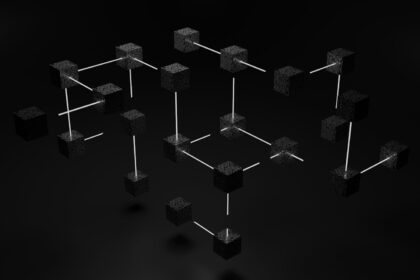Reducing the carbon footprint of decentralized networks starts with adopting greener alternatives to traditional power consumption. The vast amount of electricity required by certain consensus mechanisms contributes significantly to global emissions, demanding urgent shifts toward sustainable practices. Transitioning to proof-of-stake and integrating renewable sources can cut energy usage by over 90%, making distributed ledger technologies more compatible with climate goals.
Current data shows that some crypto-related operations consume as much electricity annually as small countries, highlighting the urgency for innovative solutions. By improving energy efficiency and prioritizing clean inputs like solar or wind power, the sector can limit its ecological burden without sacrificing security or decentralization. Encouraging network participants to adopt these green strategies aligns economic incentives with environmental responsibility.
Balancing computational demands with sustainability requires transparent reporting and targeted improvements in hardware and software design. Enhancing algorithmic efficiency reduces unnecessary resource use, while supporting infrastructure powered by renewable grids ensures long-term viability. As consumer awareness grows, demand for eco-friendly options will drive wider adoption of responsible practices across this emerging industry.
Blockchain energy: environmental impact discussion
The substantial power consumption associated with decentralized ledger technologies has raised significant concerns regarding ecological footprints. Studies indicate that some consensus mechanisms, particularly proof-of-work (PoW), require vast computational resources which translate into high electricity usage. For example, Bitcoin’s network alone is estimated to consume over 100 terawatt-hours annually, comparable to the energy usage of entire small countries. This scale of demand necessitates a careful examination of resource allocation and efficiency within distributed systems.
Conversely, alternative approaches such as proof-of-stake (PoS) drastically reduce electrical requirements by replacing competitive mining with validator selection processes. Ethereum’s transition from PoW to PoS cut its consumption by approximately 99.95%, demonstrating a viable path towards minimizing carbon footprints while maintaining transaction security and decentralization principles. This shift highlights the potential for protocol-level optimizations to address sustainability challenges without sacrificing performance.
Technical Overview and Comparative Analysis
Consensus algorithms form the core driver behind power usage variations across networks. PoW relies on continuous cryptographic hashing by miners, incentivizing hardware-intensive operations that increase energy draw exponentially during heightened activity periods. In contrast, PoS leverages stake-based voting where validators are pseudo-randomly chosen based on token holdings, eliminating the need for resource-heavy calculations.
- Proof-of-Work: High energy use due to mining competition; examples include Bitcoin and Litecoin.
- Proof-of-Stake: Energy-efficient through stake validation; adopted by Ethereum 2.0 and Cardano.
- Hybrid Models: Combining features from both to balance security and consumption, e.g., Algorand.
This table illustrates average annual power consumption for selected networks:
Sustainability efforts have increasingly targeted integration with renewable sources to offset fossil fuel dependence in mining operations. Data centers powered by hydropower or solar significantly lower greenhouse gas emissions compared to coal-powered facilities traditionally used in some regions.
- Migrating infrastructure towards green electricity providers;
- Cultivating geographically diverse mining hubs in areas rich in renewables;
- Improving hardware efficiency through ASIC advancements;
- Pursuing layer-two scaling solutions that reduce on-chain computation needs.
A practical illustration comes from Icelandic data centers leveraging geothermal energy for crypto mining, resulting in near-zero carbon operation footprints while supporting network integrity globally. Similarly, projects experimenting with off-grid solar-powered nodes exemplify how sustainable frameworks can be embedded into network design without compromising decentralization.
The debate surrounding operational expenditures versus environmental stewardship continues among stakeholders balancing innovation with responsibility. Transparent reporting on electricity sourcing combined with adoption of less intensive consensus protocols creates a roadmap toward greener distributed ledger ecosystems. Educational initiatives fostering awareness about consumption patterns empower users and developers alike to prioritize eco-conscious choices when engaging with emerging financial infrastructures.
Energy consumption by consensus types
Proof of Work (PoW) is widely recognized for its high electricity demand due to the computational power required to solve cryptographic puzzles. For example, networks based on PoW can consume tens of terawatt-hours annually, comparable to the energy usage of small countries. This significant consumption raises concerns about sustainability and carbon footprint, especially when mining operations rely on fossil fuel-based electricity sources.
Proof of Stake (PoS) presents a substantially more energy-efficient alternative by eliminating the need for intensive calculations. Instead, it selects validators based on the amount of stake they hold, reducing electrical consumption by over 99% compared to PoW systems. Networks utilizing PoS demonstrate how consensus mechanisms can align with green initiatives and decrease operational costs without compromising security.
Comparing energy demands across consensus protocols
The distinction in power use among various algorithms is stark. Delegated Proof of Stake (DPoS), for instance, further optimizes efficiency by restricting validation rights to a limited group elected by token holders, resulting in minimal resource requirements. Conversely, Proof of Authority (PoA) depends on trusted validators and operates with negligible energy consumption but introduces trade-offs in decentralization.
A practical case study is Ethereum’s transition from PoW to PoS through its upgrade known as “The Merge,” which reportedly cut energy use by approximately 99.95%. This shift serves as a critical example demonstrating feasible solutions that drastically lower environmental burden while maintaining network integrity and user trust.
Less common consensus methods such as Byzantine Fault Tolerance (BFT)-based protocols prioritize communication between nodes rather than raw computation, leading to relatively low power requirements suitable for permissioned ledgers in enterprise settings. These variants highlight opportunities where tailored approaches can meet both performance and sustainability goals.
The choice between consensus models involves balancing energy consumption with other priorities like security and decentralization. Exploring hybrid schemes or incorporating renewable energy sources can further reduce ecological footprints while ensuring robust operation. Understanding these technical nuances empowers stakeholders to advocate for greener practices aligned with long-term viability.
A step-by-step approach toward adopting less consumptive consensus includes evaluating current network demands, identifying potential protocol upgrades, and integrating sustainable infrastructure solutions such as solar-powered mining rigs or validator nodes located in regions abundant with renewable resources. This pragmatic pathway supports gradual improvement without disrupting existing ecosystems or user confidence.
Carbon footprint of mining farms
Minimizing the carbon footprint of mining operations requires prioritizing sustainable power sources and optimizing hardware efficiency. Large-scale facilities often consume megawatts of electricity, with some studies estimating annual consumption comparable to small countries. For example, a single major mining farm can use upwards of 100 MW continuously, which translates into significant greenhouse gas emissions if powered by fossil fuels. Transitioning to renewable options such as hydroelectric or solar power can dramatically reduce the overall emissions associated with computational work.
The intensity of electrical consumption varies depending on the hashing algorithms and equipment used. ASIC miners designed for specific consensus mechanisms generally provide higher hashrate per watt compared to older GPU setups. Research indicates that newer generation ASICs can improve energy efficiency by 30-50%, effectively lowering the carbon emissions per unit of processed data. Moreover, implementing advanced cooling solutions–like immersion cooling–can further decrease energy usage by reducing reliance on traditional air conditioning systems.
Strategies for sustainability in mining farms
Several operators are incorporating green practices by situating facilities near abundant renewable resources or leveraging stranded energy that would otherwise go unused. Locations rich in hydropower, geothermal, or wind capacity offer natural advantages for reducing environmental burdens. For instance, Iceland’s volcanic activity provides cheap and clean geothermal energy utilized by local mining farms to lower their carbon output significantly. Additionally, some companies engage in Power Purchase Agreements (PPAs) ensuring that the electricity consumed is matched with renewable production elsewhere.
Innovative approaches also include dynamic load balancing where miners adjust their operation based on grid demand and availability of clean electricity. This method aligns high-intensity computations with periods of surplus renewable generation, maximizing sustainability without compromising performance. Further technical developments focus on algorithmic improvements that require less computational power without sacrificing security or decentralization. Such integrated solutions present a promising path forward for reducing the ecological footprint inherent in large-scale cryptographic validation processes.
Renewable Energy Integration Challenges
Maximizing the adoption of sustainable power sources within distributed ledger networks requires addressing grid stability and resource intermittency. Renewable installations such as solar and wind are inherently variable, leading to fluctuating supply that complicates consistent consumption patterns for data centers supporting decentralized transactions. Solutions like advanced energy storage systems and predictive load balancing algorithms help mitigate these challenges by smoothing output and aligning demand with generation cycles.
Another critical hurdle lies in the geographic mismatch between renewable energy availability and major mining operations or node locations. Many high-capacity computing facilities are situated in regions where clean resources are scarce or expensive, forcing reliance on fossil-fuel-based grids. Transitioning these hubs demands substantial investment in local green infrastructure or relocation strategies coupled with smart contracts incentivizing green power usage through verifiable metrics embedded directly into transaction processing.
Technical and Operational Barriers
The complexity of integrating intermittent power introduces operational risks for maintaining uptime in consensus mechanisms reliant on continuous operation. Variations in supply can cause temporary drops in computational throughput, potentially affecting network security and transaction finality. Hybrid models combining renewables with backup conventional generators or grid imports serve as interim approaches, though they dilute overall sustainability goals.
Moreover, the electrical load profiles of validating nodes often peak during times when renewable generation dips, such as nighttime hours for solar plants. Implementing demand response programs powered by decentralized applications enables dynamic adjustment of computing loads, aligning consumption with cleaner production windows. This approach benefits from real-time telemetry data collected via IoT sensors connected to both power assets and blockchain nodes.
- Energy Storage: Lithium-ion batteries and emerging technologies like flow batteries provide buffering capacity but entail cost and lifecycle trade-offs.
- Grid Modernization: Upgrading transmission infrastructure to handle bidirectional flows supports distributed renewable injection alongside traditional supply.
- Regulatory Frameworks: Policies encouraging green certificates linked to blockchain transactions promote transparent auditing of sustainable practices.
Diverse pilot projects illustrate practical pathways forward. For example, a consortium operating a proof-of-stake network partnered with offshore wind farms implementing tokenized energy credits that reward validators based on verified renewable input percentages. Similarly, microgrid deployments at crypto mining sites utilize solar-plus-storage arrays integrated via smart meters communicating energy provenance securely onto ledgers, creating replicable templates for carbon footprint reduction within digital asset ecosystems.
The journey toward fully sustainable distributed networks involves iterative testing and scaling of these solutions while balancing cost-effectiveness against ecological benefits. Stakeholders must prioritize transparency through immutable records verifying adherence to green criteria, fostering trust among participants motivated both economically and ethically to reduce their carbon footprint within this rapidly growing technological domain.
Comparing blockchain with traditional systems
When evaluating the consumption of resources, decentralized ledger technology often shows a higher demand compared to conventional centralized databases. For instance, proof-of-work consensus mechanisms require significant computational power, which translates into elevated electricity usage. In contrast, traditional financial networks and data centers typically operate under optimized energy protocols, resulting in lower overall resource consumption per transaction.
However, emerging alternatives such as proof-of-stake and other consensus algorithms drastically reduce power requirements by eliminating intensive mining processes. These innovations contribute to more sustainable practices within distributed frameworks and demonstrate how evolving technical solutions can mitigate adverse effects on the planet’s well-being.
The shift towards greener infrastructure is observable in many industries utilizing both decentralized and centralized models. For example, some large banks have adopted renewable-powered data centers to minimize their ecological footprint. Similarly, certain blockchain projects run nodes exclusively on solar or wind-generated electricity, aiming to harmonize operational demands with eco-friendly principles.
A detailed comparison reveals that transaction speed and throughput also influence resource utilization patterns. Traditional payment systems benefit from mature architectures capable of processing thousands of transactions per second with relatively low energy input. Meanwhile, scalable layer-two protocols and sharding techniques in decentralized networks strive to achieve comparable efficiency while maintaining transparency and security.
For organizations seeking environmentally conscious options, understanding the nuances between these technologies is critical. Practical implementation often involves balancing trustlessness and decentralization against energy use and carbon emissions. Evaluating case studies such as Ethereum’s transition toward less power-intensive methods offers valuable insight into ongoing efforts for responsible innovation across various platforms.
Regulatory Approaches to Blockchain Energy
The path toward greener and more sustainable ledger technologies hinges on targeted regulatory frameworks that directly address excessive power consumption without stifling innovation. Introducing mandatory energy benchmarks, such as capping carbon emissions per transaction or incentivizing the use of renewable sources via tokenized rewards, can materially reduce the ecological footprint associated with decentralized networks.
For instance, jurisdictions employing dynamic tariffs based on real-time grid load successfully encourage protocol adjustments toward off-peak operation. These measures demonstrate how policy can catalyze technical adaptations like proof-of-stake consensus and layer-two scaling solutions, which drastically cut electricity draw compared to traditional mining approaches.
Key Strategies for Future Sustainable Solutions
- Performance-Based Regulation: Implementing efficiency standards tied to measurable metrics–such as joules per transaction–drives developers to optimize code and hardware usage.
- Renewable Energy Mandates: Requiring that a minimum percentage of consumed electricity originates from green sources encourages integration of solar, wind, or hydroelectric power into node operations.
- Transparency and Reporting: Obligatory disclosure of energy consumption data by network participants promotes accountability and allows stakeholders to evaluate environmental costs effectively.
- Incentivization Models: Combining carbon credits with blockchain-based tokens creates economic motivation for low-impact practices and fosters ecosystem-wide sustainability adoption.
- Cross-sector Collaboration: Aligning regulatory efforts with utility providers and technology innovators ensures synergy between energy infrastructure capabilities and decentralized application demands.
The broader consequence of these policies extends beyond immediate reductions in resource usage; they set a precedent for integrating ecological considerations into emerging technologies. As protocols evolve, regulators must remain adaptable, recognizing advancements like zero-knowledge proofs or sharding that inherently lower power requirements. This forward-looking stance will be pivotal in balancing distributed ledger utility with planetary health concerns.
Ultimately, harmonized governance structures focused on minimizing consumption not only enhance environmental stewardship but also improve network resilience and public trust. By fostering collaboration between legislators, technologists, and consumers around clear sustainability goals, the sector can pioneer scalable solutions that benefit both economic growth and natural ecosystems alike.





